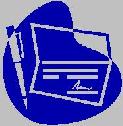
 |
|
| Financial Terms | |
| degree of operating leverage (DOL) |
|
Information about financial, finance, business, accounting, payroll, inventory, investment, money, inventory control, stock trading, financial advisor, tax advisor, credit.
Main Page: credit, finance, accounting, inventory, stock trading, payroll, tax advisor, financial advisor, |
Definition of degree of operating leverage (DOL)
degree of operating leverage (DOL)Percentage change in profits given a 1 percent change in sales.
Related Terms:Annual fund operating expensesFor investment companies, the management fee and "other expenses," Debt leverageThe amplification of the return earned on equity when an investment or firm is financed Dollar bondsMunicipal revenue bonds for which quotes are given in dollar prices. Not to be confused with Dollar durationThe product of modified duration and the initial price. Dollar price of a bondPercentage of face value at which a bond is quoted. Dollar returnThe return realized on a portfolio for any evaluation period, including (1) the change in market Dollar rollSimilar to the reverse repurchase agreement - a simultaneous agreement to sell a security held in a  Dollar safety marginThe dollar equivalent of the safety cushion for a portfolio in a contingent immunization Dollar-weighted rate of returnAlso called the internal rate of return, the interest rate that will make the EurodollarThis is an American dollar that has been deposited in a European bank or an U.S. bank branch Eurodollar bondsEurobonds denominated in U.S.dollars. Financial leverageUse of debt to increase the expected return on equity. Financial leverage is measured by Financial leverage clienteleA group of investors who have a preference for investing in firms that adhere to Financial leverage ratiosRelated: capitalization ratios. Fixed-dollar obligationsConventional bonds for which the coupon rate is set as a fixed percentage of the par value. Fixed-dollar securityA nonnegotiable debt security that can be redeemed at some fixed price or according to  Highly leveraged transaction (HLT)Bank loan to a highly leveraged firm. Homemade leverageIdea that as long as individuals borrow (or lend) on the same terms as the firm, they can LeverageThe use of debt financing. Leverage clienteleA group of shareholders who, because of their personal leverage, seek to invest in Leverage ratiosMeasures of the relative contribution of stockholders and creditors, and of the firm's ability Leverage rebalancingMaking transactions to adjust (rebalance) a firm's leverage ratio back to its target. Leveraged betaThe beta of a leveraged required return; that is, the beta as adjusted for the degree of Leveraged buyout (LBO)A transaction used for taking a public corporation private financed through the use Leveraged equityStock in a firm that relies on financial leverage. Holders of leveraged equity face the Leveraged leaseA lease arrangement under which the lessor borrows a large proportion of the funds needed Leveraged portfolioA portfolio that includes risky assets purchased with funds borrowed.  Leveraged required returnThe required return on an investment when the investment is financed partially by debt. Leveragehe use of debt financing. Leveraged portfolioA portfolio that includes risky assets purchased with funds borrowed. Net benefit to leverage factorA linear approximation of a factor, T*, that enables one to operationalize the Net operating lossesLosses that a firm can take advantage of to reduce taxes. Net operating marginThe ratio of net operating income to net sales. Operating cash flowEarnings before depreciation minus taxes. It measures the cash generated from Operating cycleThe average time intervening between the acquisition of materials or services and the final Operating exposuredegree to which exchange rate changes, in combination with price changes, will alter a Operating profit marginThe ratio of operating margin to net sales. Operating leaseShort-term, cancelable lease. A type of lease in which the period of contract is less than the Operating leverageFixed operating costs, so-called because they accentuate variations in profits. Operating riskThe inherent or fundamental risk of a firm, without regard to financial risk. The risk that is Short-run operating activitiesEvents and decisions concerning the short-term finance of a firm, such as Soft dollarsThe value of research services that brokerage houses supply to investment managers "free of Total dollar returnThe dollar return on a nondollar investment, which includes the sum of any Unleveraged betaThe beta of an unleveraged required return (i.e. no debt) on an investment when the Unleveraged required returnThe required return on an investment when the investment is financed entirely OPERATING EXPENSESThe total amount that was spent to run a company this year. Operating profitThe profit made by the business for an accounting period, equal to gross profit less selling, finance, administration etc. expenses, but before deducting interest or taxation. cash flow from operating activities, or cash flow from profitThis equals the cash inflow from sales during the period minus the cash financial leverageThe equity (ownership) capital of a business can serve operating activitiesIncludes all the sales and expense activities of a business. operating cash flowSee cash flow from operating activities. operating leverageA relatively small percent increase or decrease in operating profitSee earnings before interest and income tax (EBIT). Operating Cash FlowIncome available after the payment of taxes, plus the value of the degree of operating leveragea factor that indicates how a percentage change in sales, from the existing or current dollar days (of inventory)a measurement of the value of inventory for the time that inventory is held operating budgeta budget expressed in both units and dollars operating leveragethe proportionate relationship between Constant dollar accountingA method for restating financial statements by reducing or Leveraged buyoutThe purchase of one business entity by another, largely using borrowed Operating expenseAny expense associated with the general, sales, and administrative Operating incomeThe net income of a business, less the impact of any financial activity, Operating leaseThe rental of an asset from a lessor, but not under terms that would eurodollarsdollars held on deposit in a bank outside the United States. financial leverageDebt financing amplifies the effects of changes in operating income on the returns to stockholders. leveraged buyout (LBO)Acquisition of the firm by a private group using substantial borrowed funds. operating leveragedegree to which costs are fixed. operating risk (business risk)Risk in firm’s operating income. Constant dollarsSee real dollars. Current DollarsA variable like GDP is measured in current dollars if each year's value is measured in prices prevailing during that year. In contrast, when measured in real or constant dollars, each year's value is measured in a base year's prices. EurodollarsDeposits denominated in U.S. dollars but held in banks located outside the United States, such as in Canada or France. 45-Degree LineA line representing equilibrium in the goods and services market, on a diagram with aggregate demand on the vertical axis and aggregate supply on the horizontal axis. Cash Flow Provided by Operating ActivitiesWith some exceptions, the cash effects of transactions Operating EarningsA term frequently used to describe earnings after the removal of the Operating IncomeA measure of results produced by the core operations of a firm. It is common Dollar Cost AveragingA way of smoothing out your investment deposits by investing regularly. Instead of making one large deposit a year into your RRSP, you make smaller regular monthly deposits. If you are buying units in a mutual fund or segregated equity fund, you would end up buying more units in the month that values were low and less units in the month that values were higher. By spreading out your purchases, you don't have to worry about buying at the right time. Split Dollar Life InsuranceThe split dollar concept is usually associated with cash value life insurance where there is a death benefit and an accumulation of cash value. The basic premise is the sharing of the costs and benefits of a life insurance policy by two or more parties. Usually one party owns and pays for the insurance protection and the other owns and pays for the cash accumulation. There is no single way to structure a split dollar arrangement. The possible structures are limited only by the imagination of the parties involved. LeverageThe relationship between interest bearing debt and equity in a company(financial leverage) or the effect of fixed expense on after tax earnings(operating leverage). Operating LeaseOne where the risks and benefits, as well as ownership, stays with the lessor. Operating Line of CreditA bank's commitment to make loans to a particular borrower up to a specified maximum for a specified period, usually one year. Operating LoanA loan advanced under an operating line of credit. Operating ExpensesThe amount of money the company must spend on overhead, distribution, taxes, underwriting the risk and servicing the policy. It is a factor in calculating premium rates. margin of safetythe excess of the budgeted or actual sales Related to : financial, finance, business, accounting, payroll, inventory, investment, money, inventory control, stock trading, financial advisor, tax advisor, credit. |